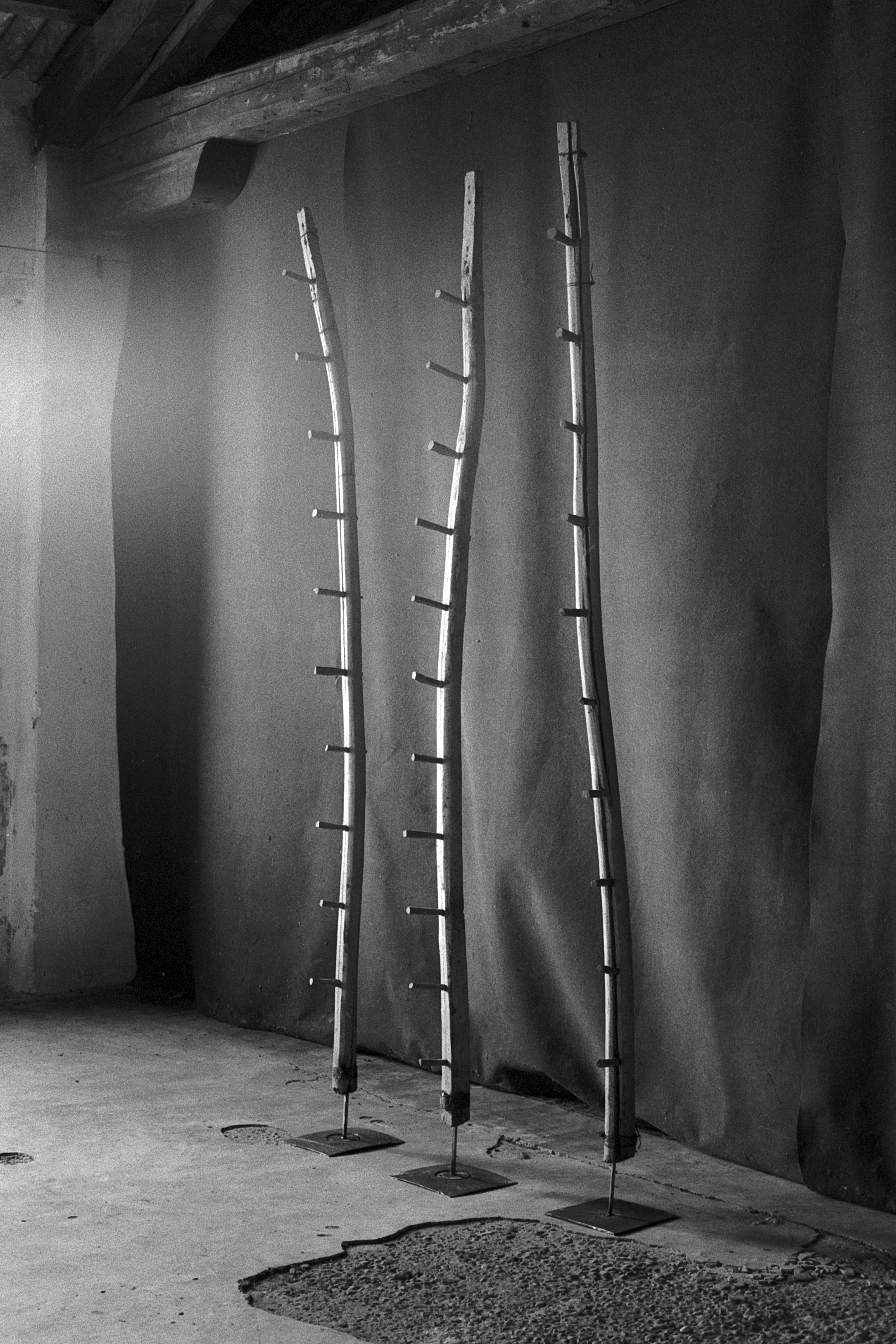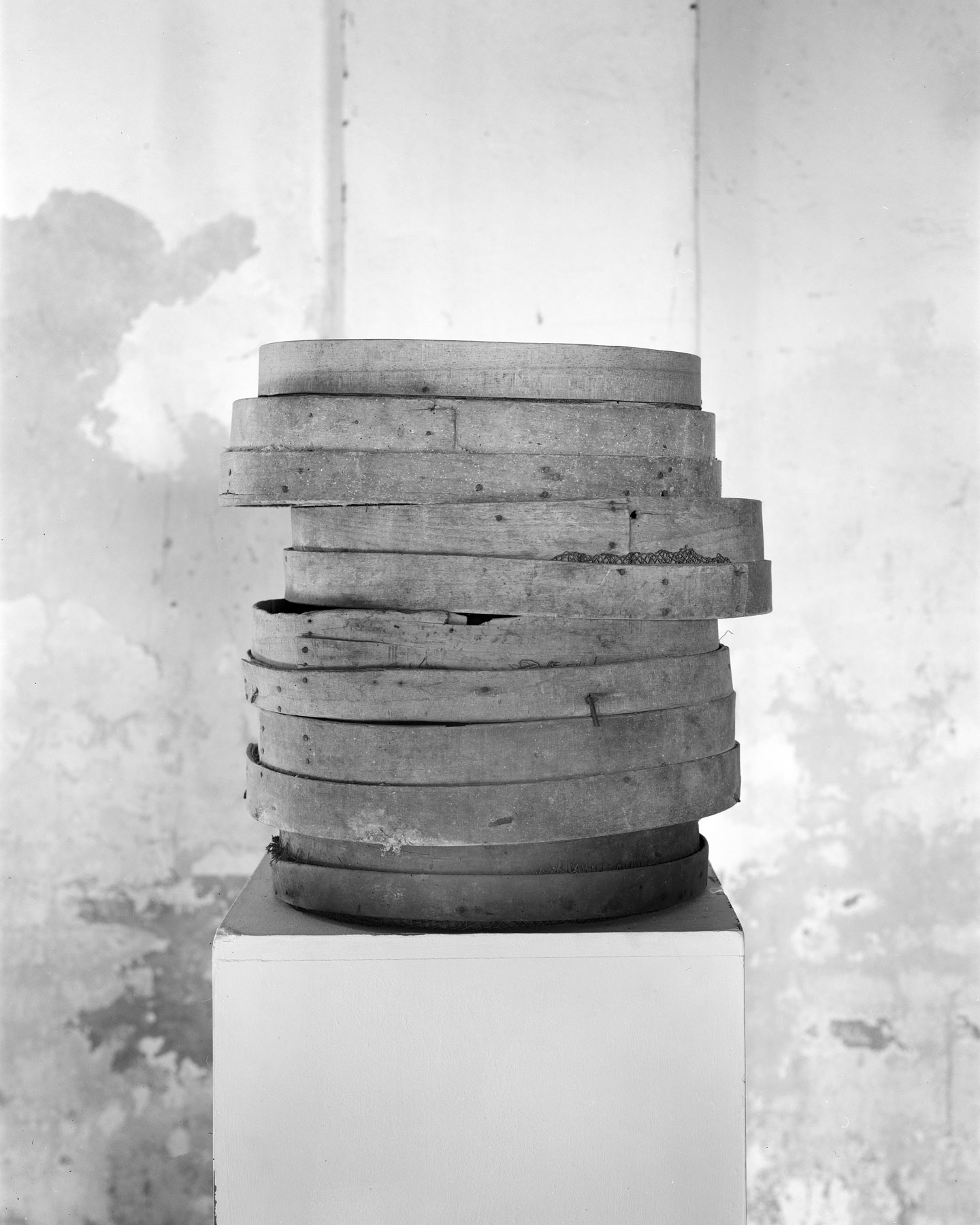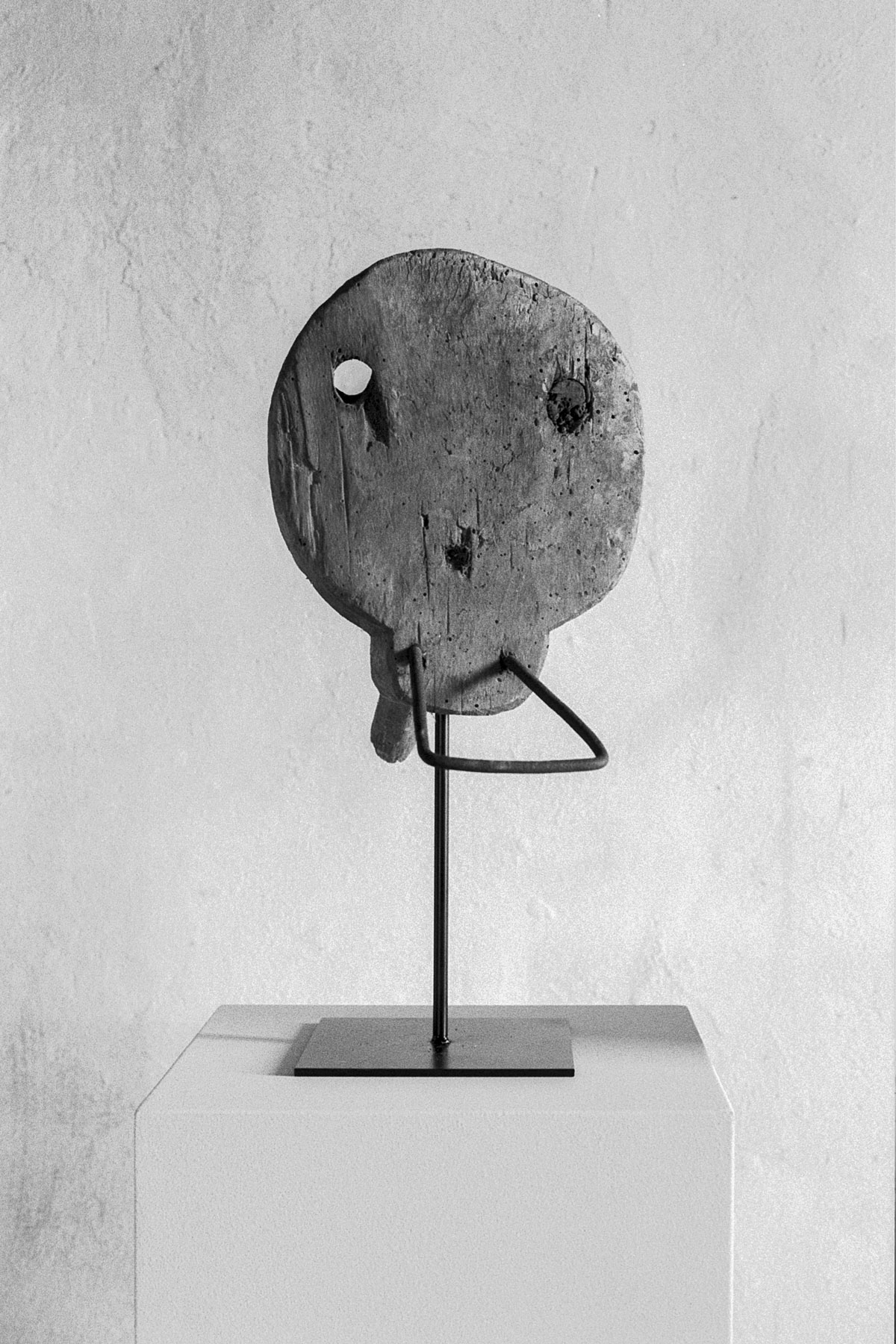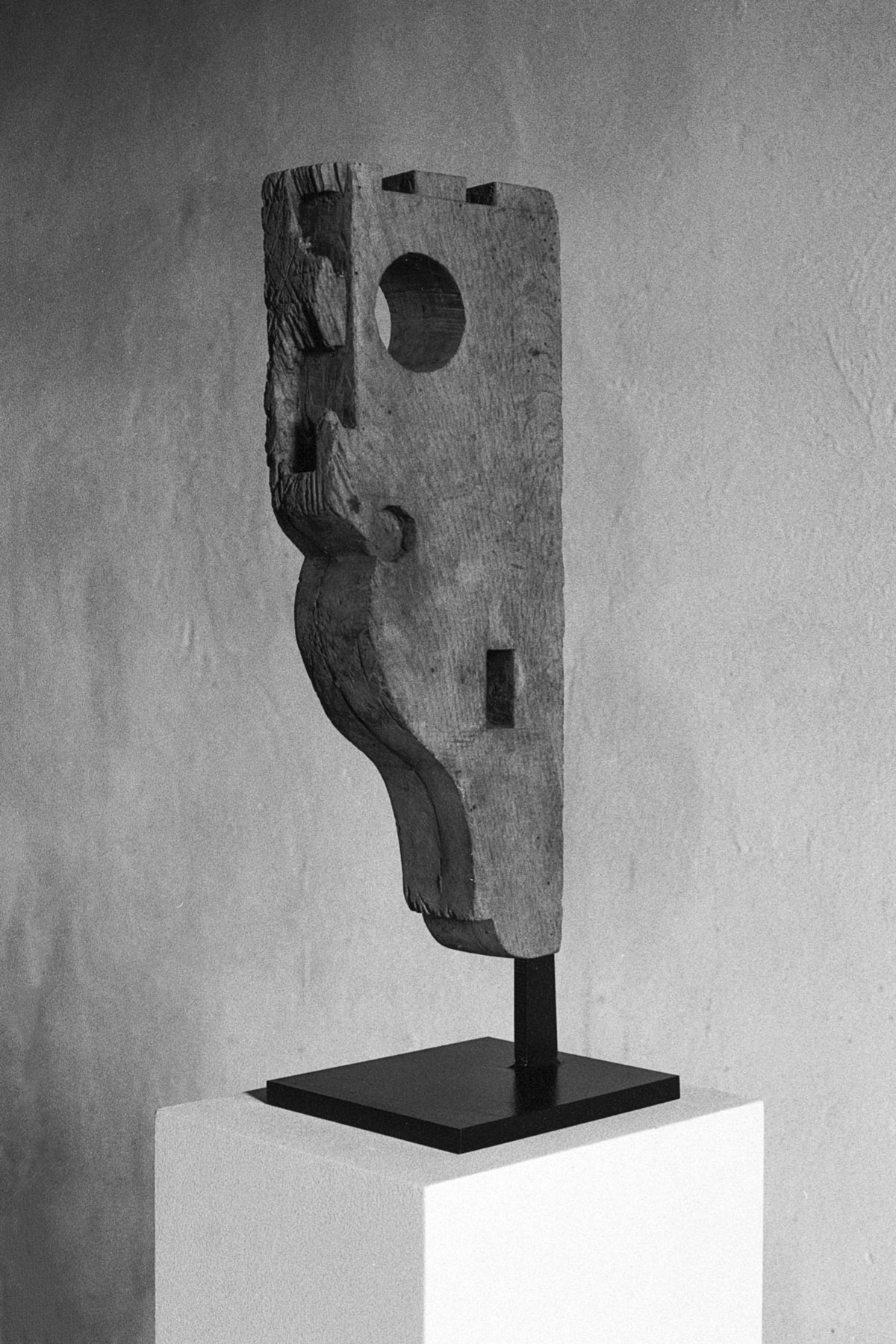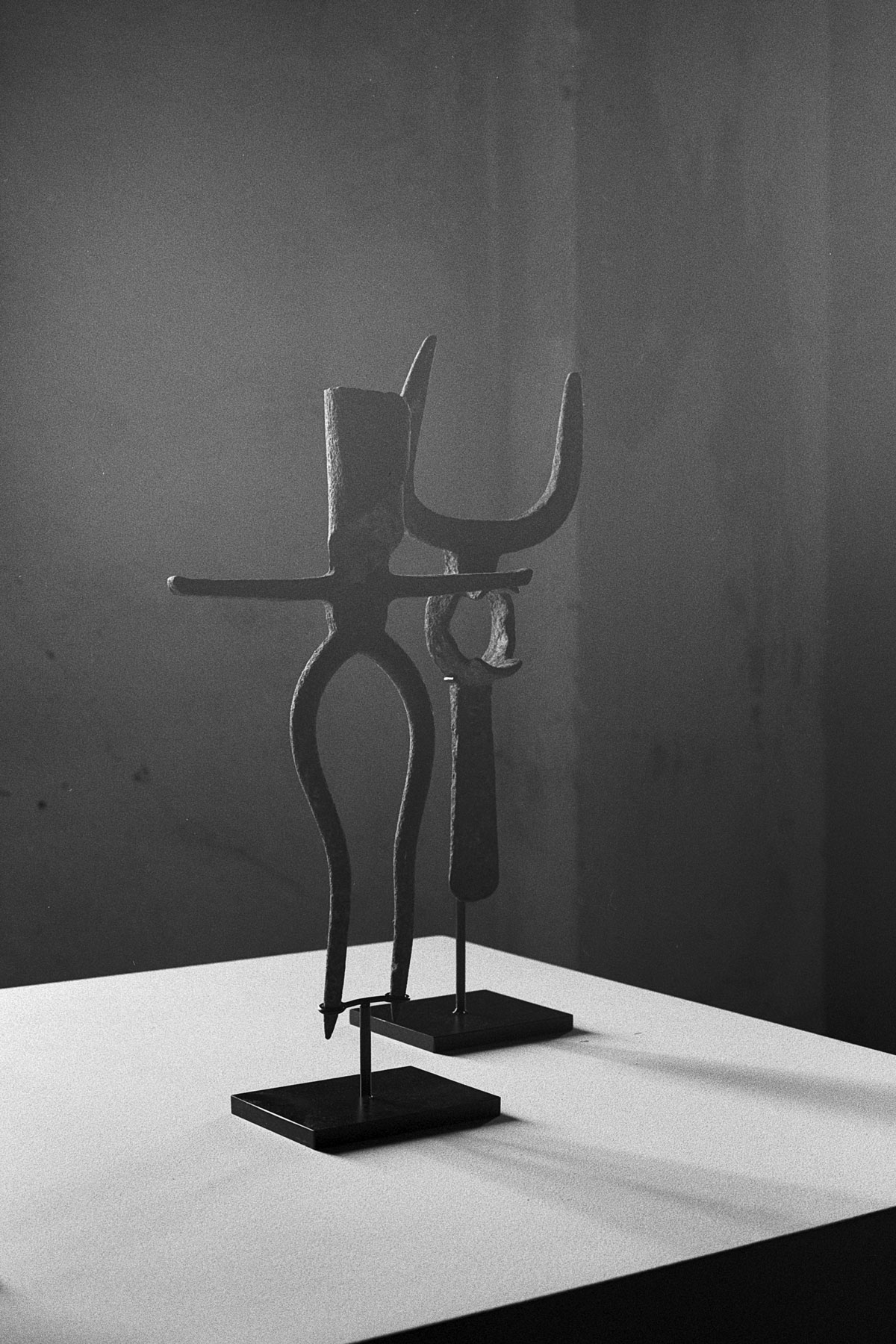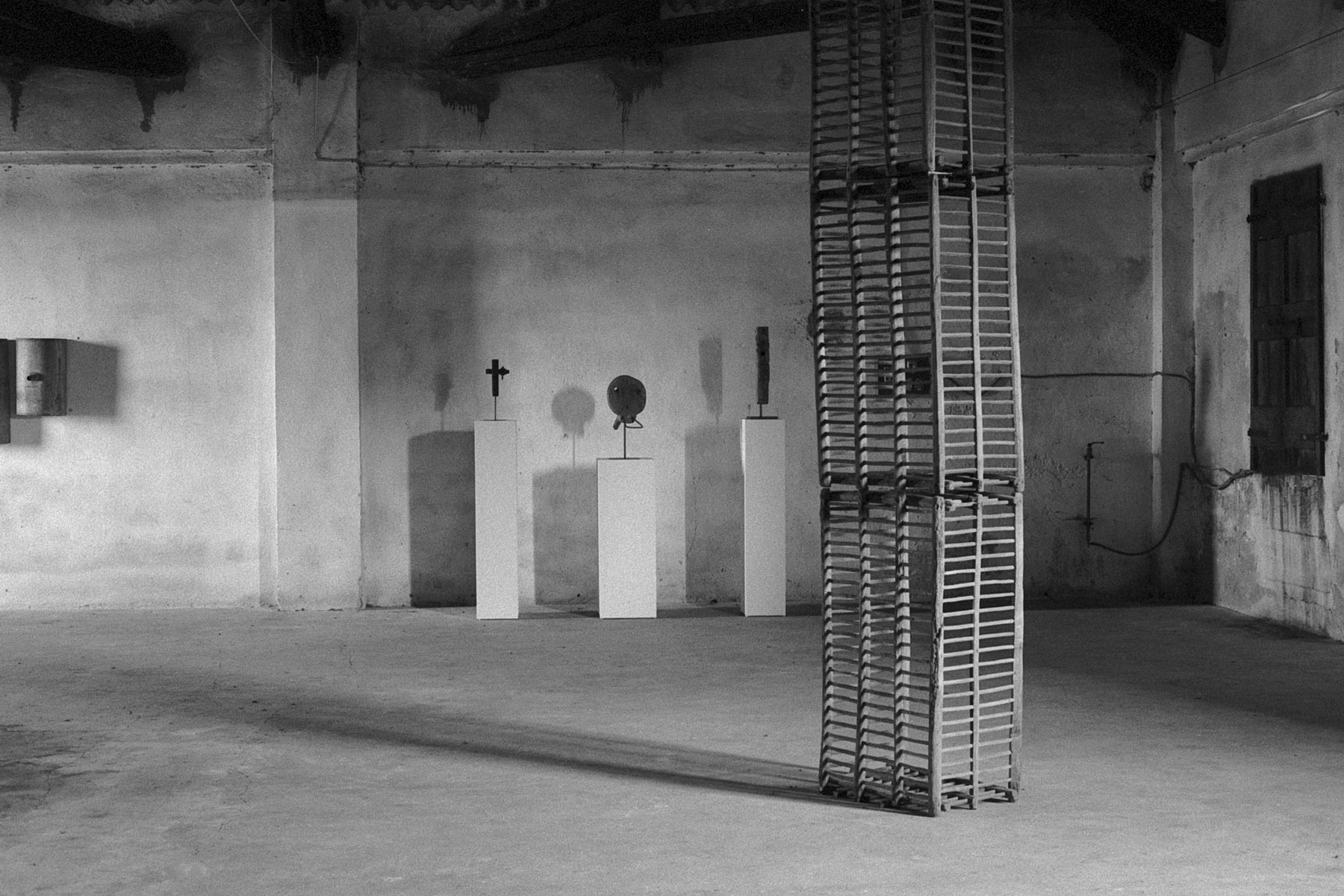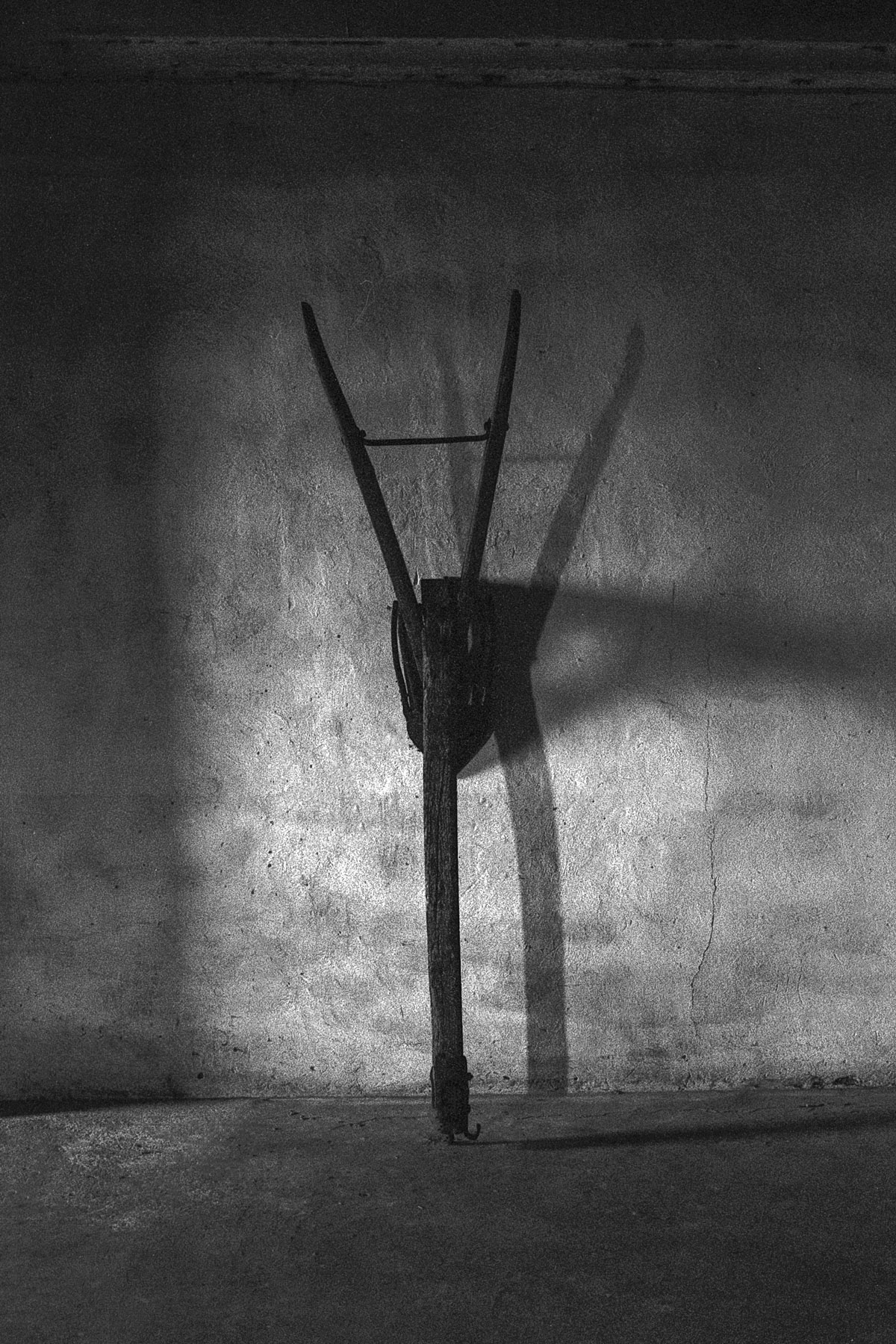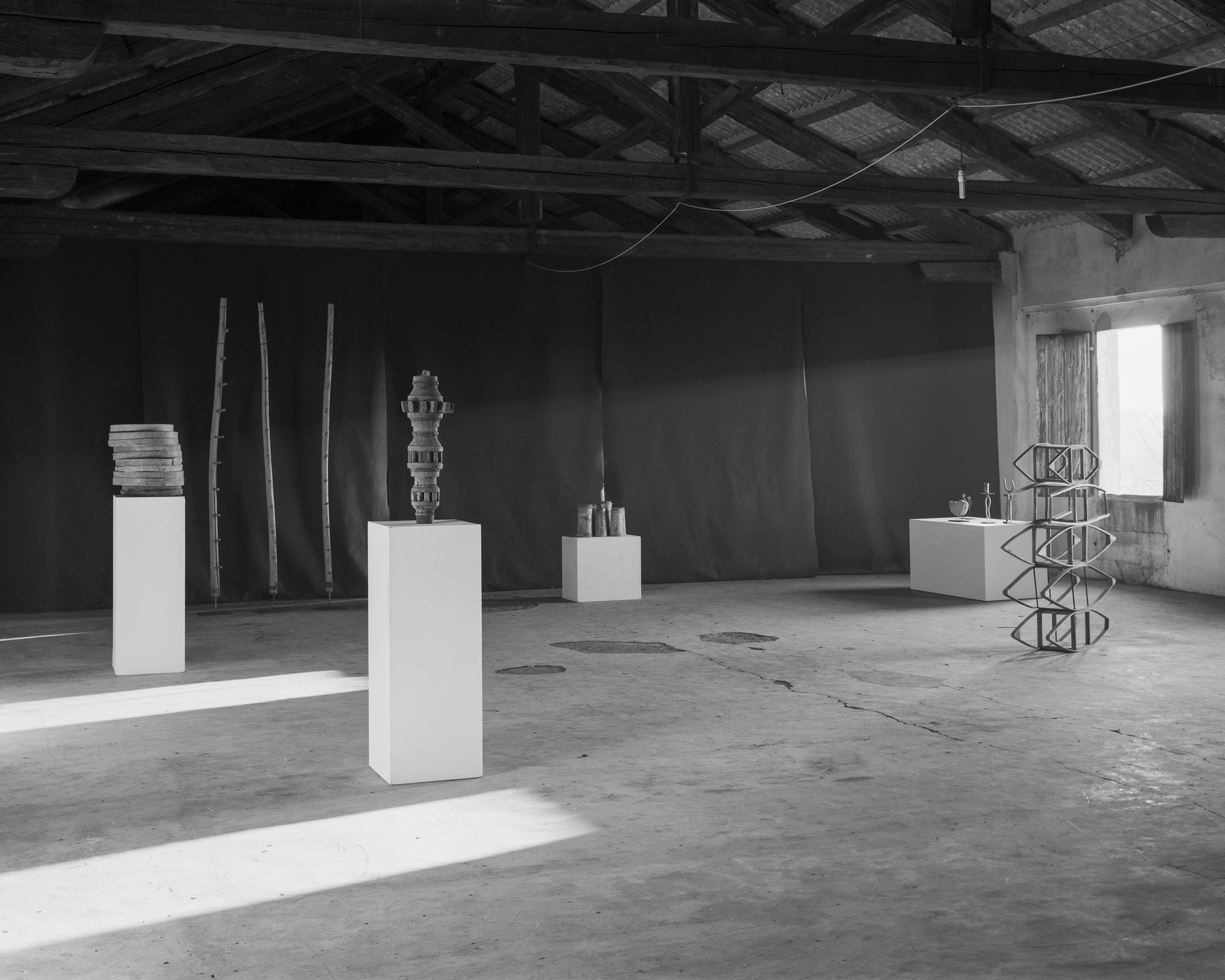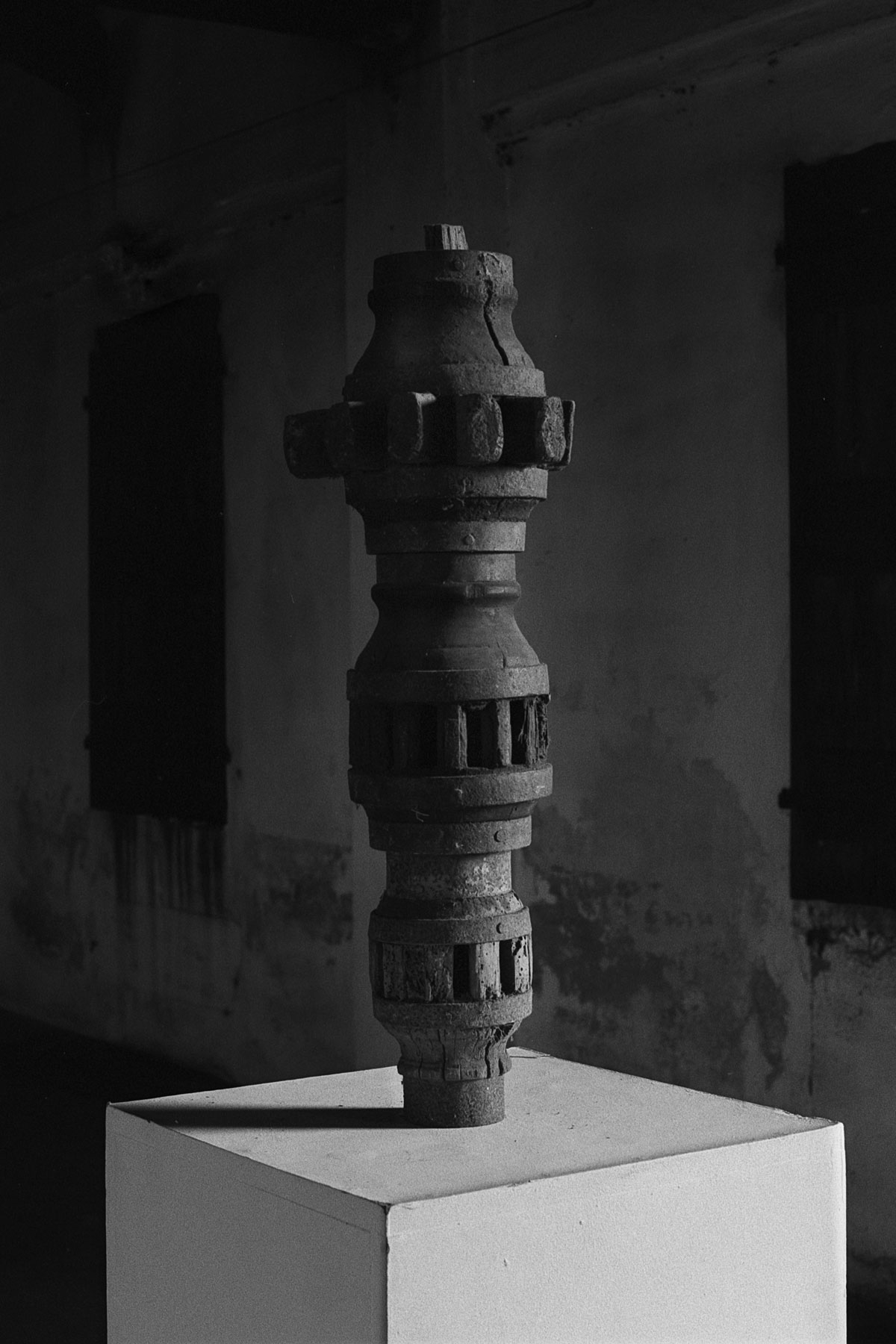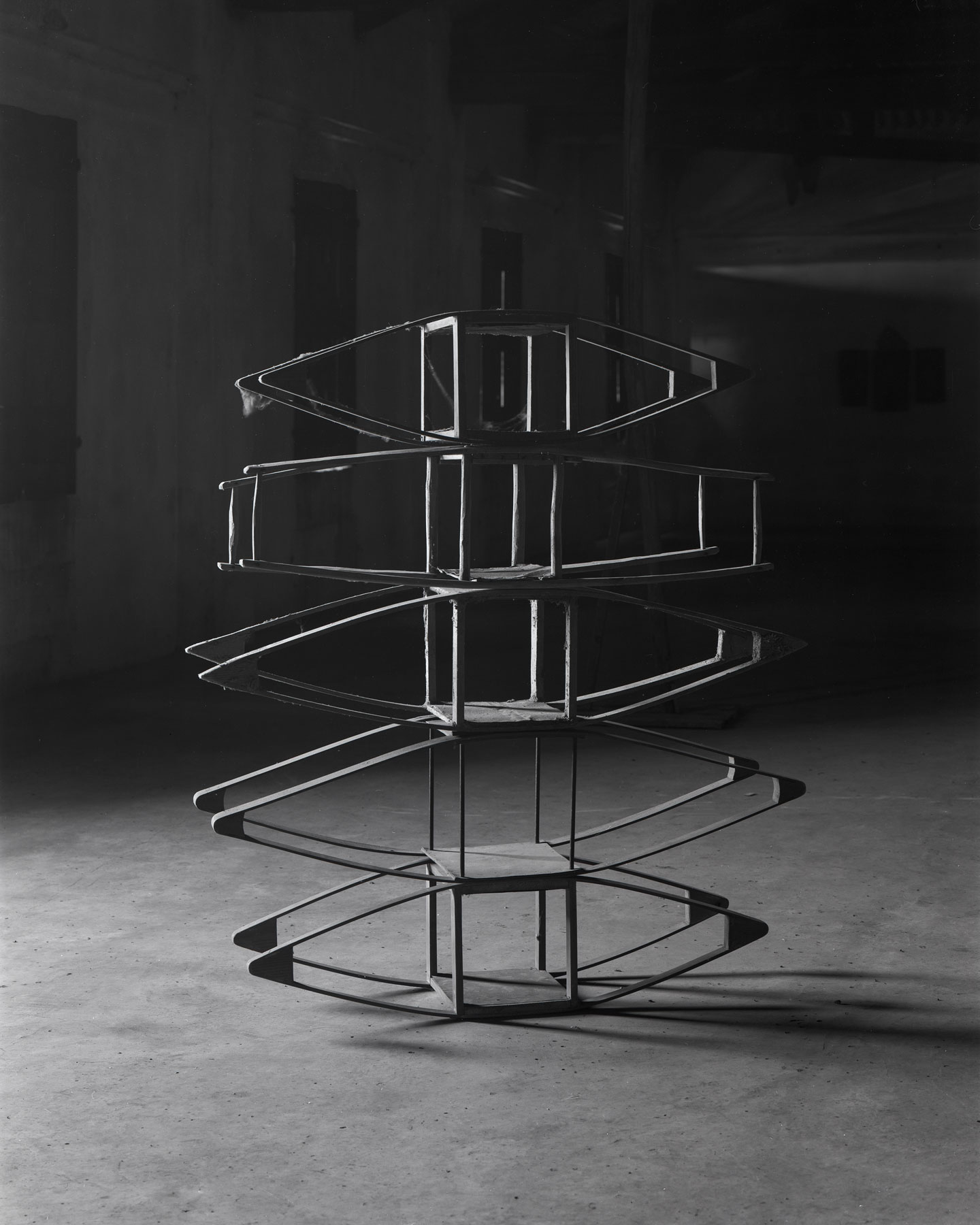ritualia
Ritualia
Ritualia is a series of photographs and installations produced during an artist’s residence in the eastern part of the Veneto region in northern Italy organized by Humus Interdisciplinary Residence, a platform I founded in 2015 under which international artists are invited to reinterpret local identities in rural and marginal areas in the Veneto. We worked with other artists on an archive of objects contained in an old museum of peasant civilisation which had been closed for many years due to administrative issues, in an attempt to cast a new light on it that would reveal its value to the community and lead to reopening of the museum.
I worked entirely on the half-empty third floor, the top floor of the big, decaying rural building housing the museum, which I used as an experimental exhibition space in which to set up a fictitious exhibition, taking items formerly used by local farmers from the museum on the building’s lower levels and arranging them in the space according to the display criteria typical of the first primitive art exhibitions held in Paris and New York in the early twentieth century. The goal was to present objects which are normally considered valueless in a new light, bringing them closer to a horizon of meaning associated with sacred and religious objects from tribal cultures such as those of Africa and Oceania. As if the know-how of the craftspeople of these cultures and the humble craftspeople of our own countryside had something in common, a deep intuition linked with the earth, an unconscious root cast down in a sacred collective space.
The work is founded on a critique of the linear conception of history, in which the past is seen as something obsolete and lifeless: this vision also determined by the progress-oriented model of development that has generated a deep break with rural civilisation in many parts of the world, a temporality which, though submerged under the layers of industry and technology, still has a lot to say to us today. Ritualia not only generates a short circuit between two distant cultures, but attempts to generate a short circuit in time, bringing the still vital soul of the rural world back to the surface, as an anachronism, and giving it new form.
All that remains of the exhibition is photographic documentation demonstrating that it really happened and revealing the status of the objects taken from peasant civilisation as primitive ritual objects. The photographic idiom and technique also reinforce this short circuiting of time: little black and white prints made with silver salt film and an idiom drawing on modernist and surrealist photography underline the attempt to build a present in which a multitude of pasts are recalled, drawing on them to build a pluri-dimensional future that draws nourishment from a new interpretation of its roots.


